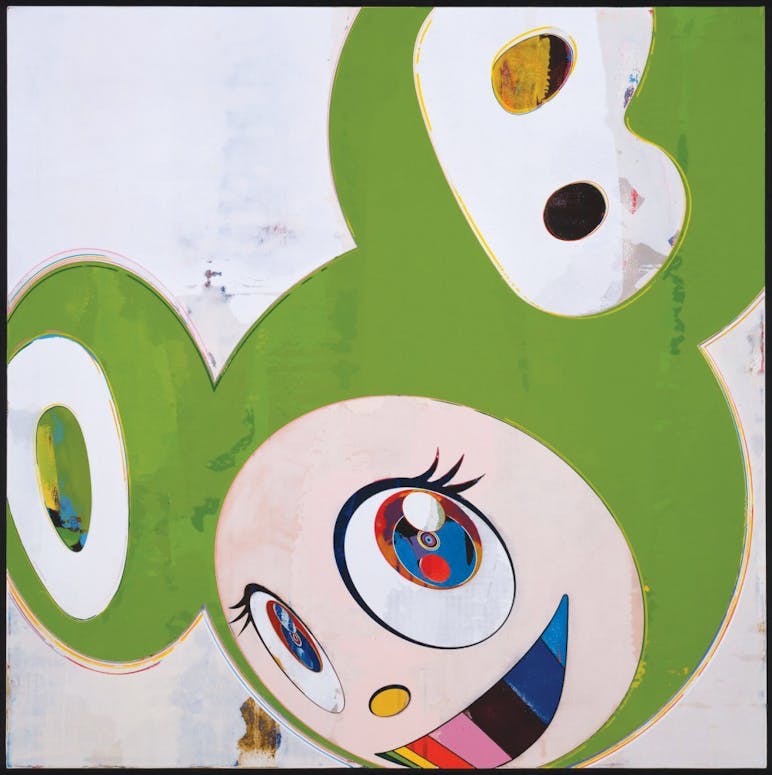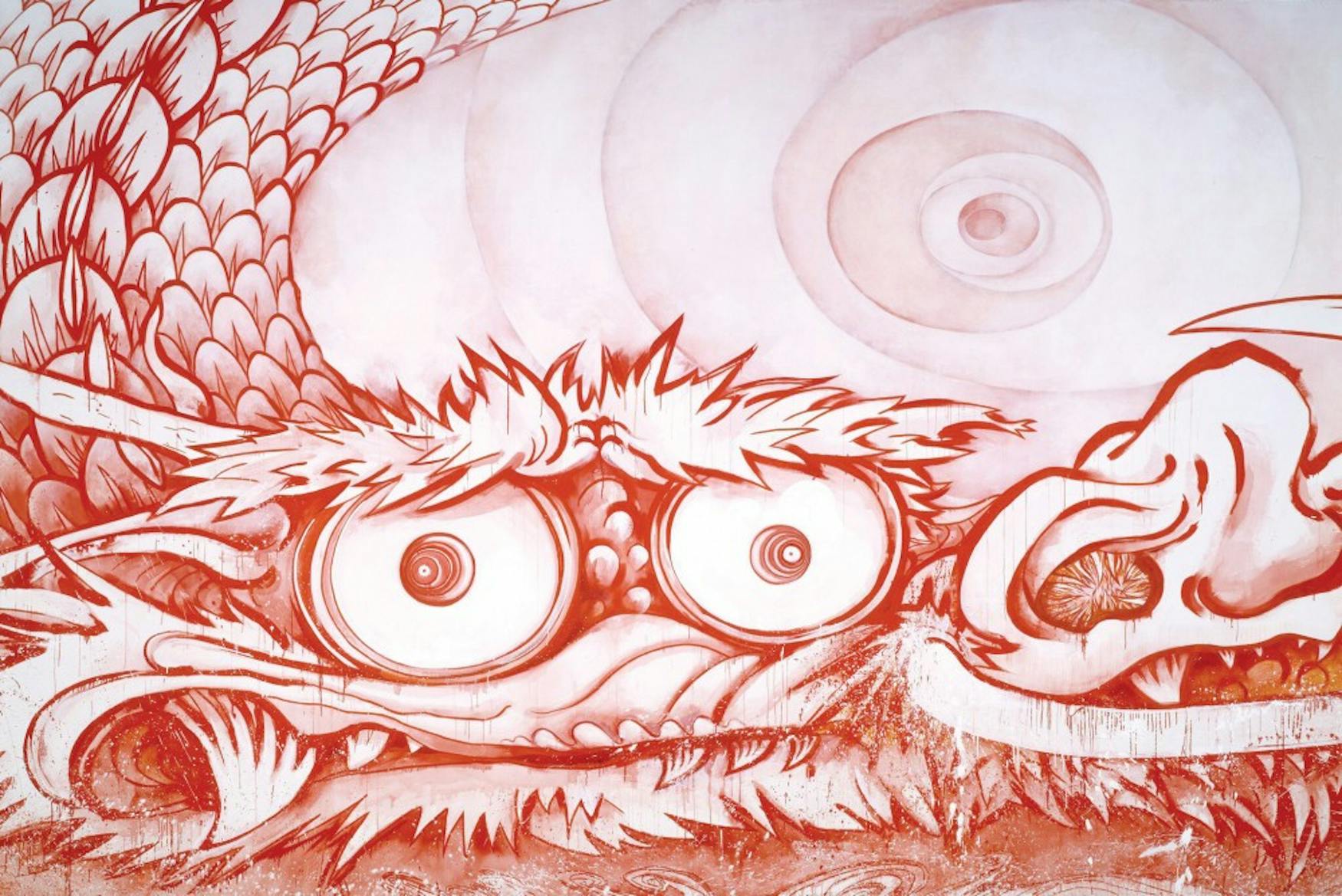MFA gives context to masterful Murakami
Review — Japanese artist Takashi Murakami is well known for his groundbreaking, colorful and graphic body of work. However, a new exhibition at the Museum of Fine Arts, “Takashi Murakami: Lineage of Eccentrics,” aims to highlight the connections between Murakami’s own unique body of work and the impressive, expansive collection of Japanese art at the MFA — giving context to Murakami’s famed works. This exhibition was curated by Murakami, his artistic and philosophical mentor Nobuo Tsuji and MFA curator Anne Nishimura Morse. The melding of these three minds results in an exhibit that succeeds in tracing the eccentric history of Japanese art through Murakami’s own repertoire.
When viewers walk into the gallery space, they are immediately greeted by Murakami’s 33-foot long painting “Transcendent Attacking a Whirlwind.” Created specially for this exhibit and the MFA, this monumental piece is inspired by the 1764 folding screen by Soga Shohaku, which is in the MFA’s Japanese collection. The swirling, chaotic original composition is given a mystical revamp by Murakami, who adds a slithering dragon in a bright psychedelic color scheme. The exhibition then moves to examine Murakami’s signature “superflat” style, which was inspired by the critical analysis of Nobuo Tsuji. The superflat manifesto aimed to blend the barriers of high and low art and to develop compositions that “flatten” the range of subjects into the piece. Alongside portraits of Murakami’s cartoonish superflat alter ego Mr. D.O.B are 18th-century paintings of birds and animals that show an earlier tendency for Japanese artists to flatten their compositions and draw a direct line between the creative visions of Murakami and artists of the past.

“GREEN TRUTH”: Murakami is known for his “superflat” iconic style.
Aside from connecting the visual past and present of Japanese art, the exhibit also alludes to the connections between the creative process of historic and contemporary Japanese artists. The 13th-century scroll “Night Attack on the Sanjō Palace” was created by dozens of artists led by a master who created the original composition. Similarly, many of Murakami’s grand works are executed by a team of multiple people working to bring his compositions to life. Curator Nishimura Morse juxtaposed handwritten notes and directions from Murakami’s own creative process with the monumental scroll, showing the similarities between the direction of Murakami and the lead artist of the scroll. This further connects the past and present of Japanese art by showing that Murakami is inspired not only by the designs of the past but also by the process.
Once viewers step out of the dark hallway where the scroll is located, they are immediately thrown into one of the highlights of the whole exhibit. The floor is covered in Murakami’s iconic flowers, and the monumental Murakami painting “Kawaii — Vacances: Summer Vacation in the Kingdom of the Golden” hangs alongside a 17th-century Tawaraya Sotatsu school painting called “Poppies.” These pictures highlight the principle of “kazari,” which has been described by Tsuji as the core principal of Japanese art. Kazari involves the transformation of a space, with the help of art, into a transcendental space. This room of the exhibit shimmers with warm gold, overflows with smiling flowers and is adorned by rainbow stained glass Murakami chandeliers. Anyone, regardless of their background in art, will feel transported and inspired in this space, and that feeling alone is enough to warrant a visit to this exhibit.
Continuing through the gallery, two more sections of the exhibit focus on the ideas of playfulness and religion in Japanese art, once again juxtaposing works by Murakami and artists of the past. The fantastical culmination of the exhibit, however, is breathtaking, showcasing Murakami’s 60-foot long “Dragon in Clouds — Red Mutation: The version I painted myself in annoyance after Professor Tsuji told me, ‘Why don’t you paint something yourself for once?’” The long, sassy title perfectly sums up the playful relationship between Murakami and his mentor. Near “Red Mutation” is the original “Dragon in Clouds” by Shohaku. This room culminates the grand exhibit by once again stressing the web of Japanese creative minds that includes Murakami, Tsuji and dozens of artists featured in the exhibition.
The true highlight of covering this event was the conference led by Murakami, Tsuji and Nishimura Morse. They told stories of how this exhibit came to fruition — many of them humorous — and talked about the importance of the superflat manifesto as a way to establish a Japanese voice in the world of contemporary art. It was clear that these three minds share not only deep connections with Japanese art and its history, but are also inspired and influenced by each other.
Overall, “Takashi Murakami: Lineage of Eccentrics” presents a beautiful and informative survey of the work of Murakami, and succeeds in connecting the artist’s groundbreaking work with traditional Japanese art.



Please note All comments are eligible for publication in The Justice.